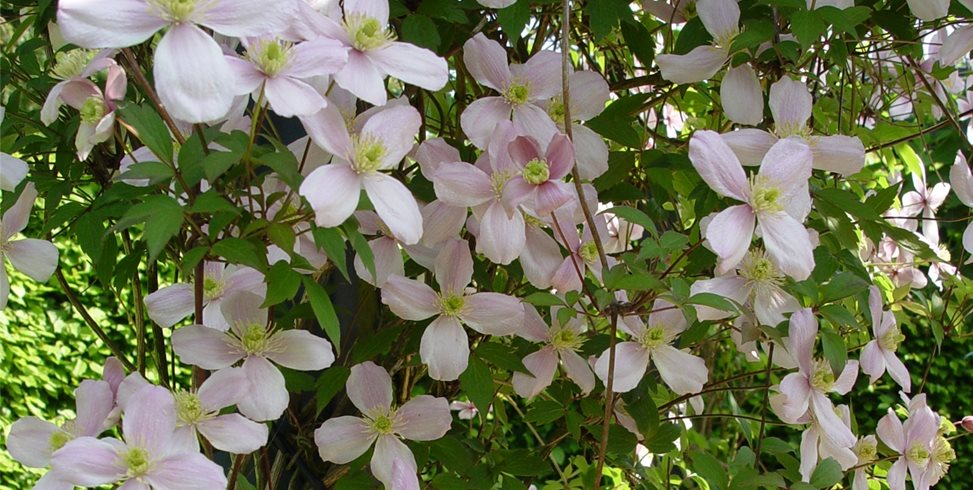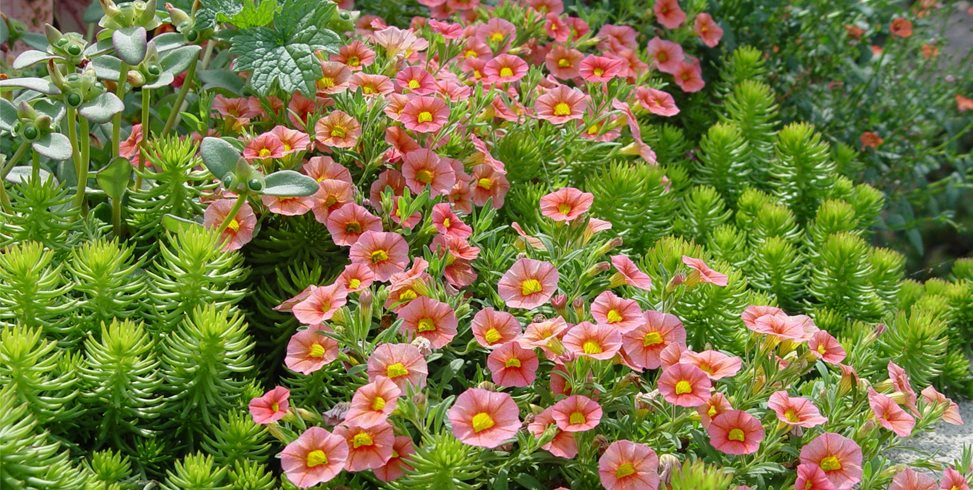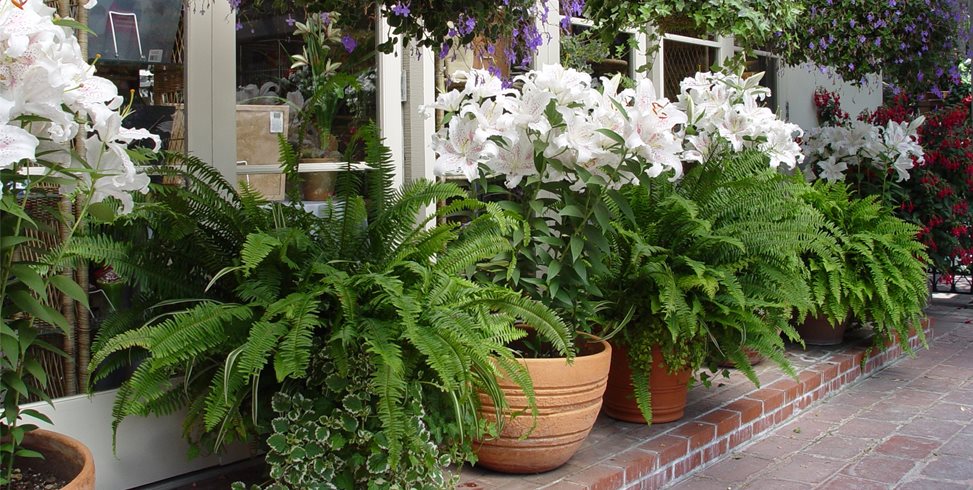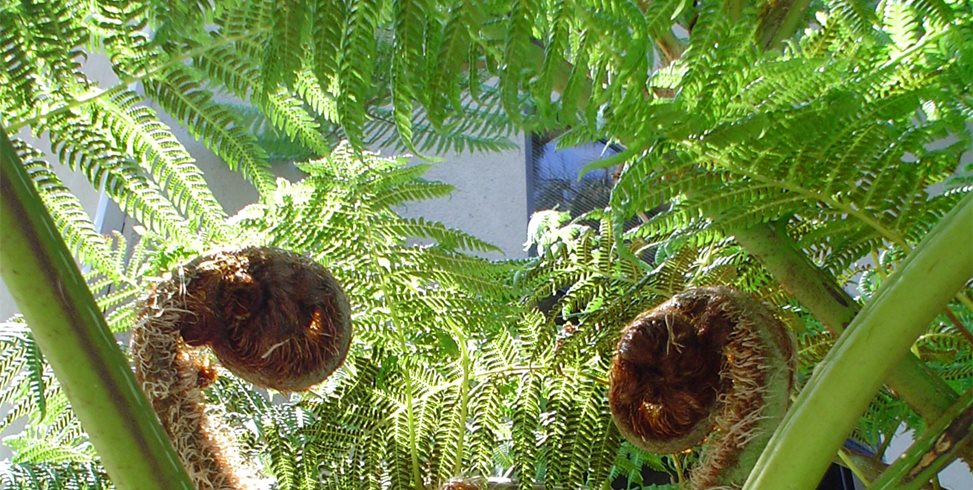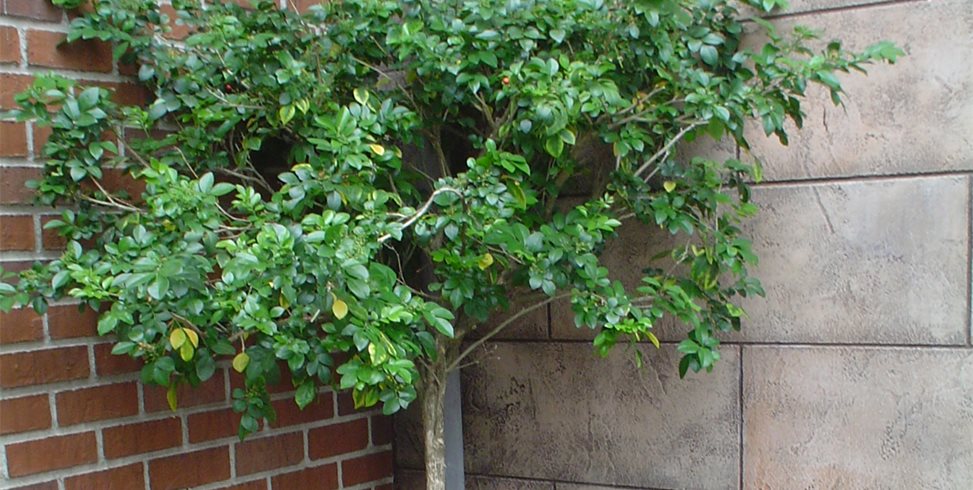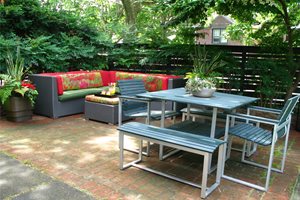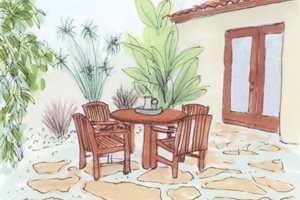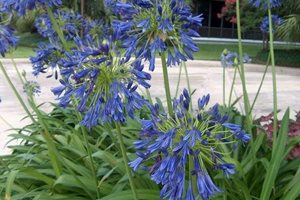Patio Gardening and Landscaping
How to plant around a patio and outdoor living spaceDiscover how planting beds can soften your hardscape and get ideas for designing space for plants around your patio.
A good planting plan can turn hard space into a natural environment for outdoor living. It can carry your interior schemes into the landscape with color and fragrance. Planting solves problems with beautiful living things. It offers a changing face with the seasons. A poorly designed planting plan does little for the quality of the space, increases maintenance, compromises square footage, and negatively impacts your enjoyment of the patio.
It pays to do your research on plants you are considering for the space. Know what they look like, when they bloom, if you like their fragrance, if they are dangerous or toxic, and make sure they remain in scale with the space over time. To help you better understand how plants can fail, we've begun this guide with The Don'ts, before we move into more positive attributes.
The Don'ts
Your terrace, patio or deck may experience all sorts of activities in many seasons. Your designer must ensure the planting works equally well for all of them. Don't just gloss over the patio planting because this is where a finely wrought planting plan can make your outdoor living spaces more than a patio, they become a three dimensional environment.
Don't oversize plants.
By far the most common mistake is using plants that crowd your limited patio space. Double check that every plant matures within the height and diameter provided. You should not have to prune or clip a plant to keep it in bounds. When you do, there's not only additional maintenance, but you sacrifice its natural beauty. Remember, these plants may be there for years to come.
Don't use sharp plants.
Plants that bear spines or thorns are painful when located near patios. The interest in succulent plants like agaves often overlooks the potentially dangerous spines on each leaf tip. These can badly scratch a leg or wreck havoc on dressy party clothing. If and when children are present, they too are vulnerable because eye level is far lower than with adults. Be careful what you plant in raised planters, along seatwalls, in narrow passage ways, dining areas and at poolside. Major offenders: Roses, cactus, some succulents, and holly.
- Pro Tip: If you do have agaves, you can disarm them by clipping off the tip of each leaf spine. Do not cut into the fleshy tissues, just snip the first eighth or quarter inch to blunt them without spoiling the beauty.
Don't use toxic plants.
Because children and animals tend to touch, smell, and sometimes eat much of what they discover, it's wise to avoid patio plants that are poisonous. Angel's trumpet, one of the most beautiful tropical flowering trees for patios contains powerful alkaloids that can be absorbed through the skin when handled. Some other major offenders are morning glory, euphorbia, castor bean, foxglove (Digitalis), and oleander.
Don't use pungent plants.
Not all natural scents are appealing, and some created to mimic pheromones can be downright stinky. Some plants can become unappealing when crushed, so beware of them along the edges of foot paths and stepping stones, or where they are likely to over grow onto pavement. Keep in mind that scents you find appealing may not always be as pleasing to others, so be careful not to overdo it. Major offenders include privet, female ginkgo tree, stinking hellebore, photinia, and carob tree.
Don't use oversized pots.
When planting in containers on the patio or deck, always be aware of the combined weight of any one pot and its contents. Large pots used for planting small patio trees or tropicals can be difficult to move or remove without heavy lifting. Whenever possible, use wheeled platforms under large pots when they must be moved to protection for winter. Or, downsize the containers but use more of them.
- Pro Tip: If you have an older wood deck that may experience dry rot or termites, beware of using heavy pots that produce a significant dead load (weight with no people) that when combined with you and your guests may overstress posts, beams, and planks to the point of failure.
The Do's
The right planting can make your patio a celebration of the senses with beauty, fragrance, texture, and color. Solve problems using carefully selected plants that enhance the outdoor living experience in a variety of ways.
Do plant fragrant flowers.
The haunting scent of jasmine adds romance to your patio, particularly after dark when the source is less visible. Careful planting design can create a succession of seasonal aromatherapies. Position the various species to maximize the experience for you and your guests. Position them close to where you sit or dine for a more intense experience, or give them distance for subtle background fragrance. Scents from plants placed upwind will waft into the patio on the prevailing breeze rather than away from it, and the fragrance of those located close to windows and doors may be drawn inside for double benefit.
Do exploit close up detail.
While sitting on the patio, you'll get an eyeful of close-up planting. This is where you can use intricately detailed flowers that may often be overlooked in a larger landscape. Many plants that feature colored foliage can be mixed and matched for high contrast all year long.
Do utilize trees in pots.
Small trees in big pots are your most powerful tool for patios that lack much ground for planting. They are an important problem solver too: A palm or crepe myrtle can distract the eye from a large bare wall behind it, or a row of them can become visual partitions to improve privacy or block unattractive views. Nothing is better for spot shading on a hot afternoon or to fill an empty corner with foliage and flowers.
Do plant for off-season interest.
While planting for the warmer months is a given, don't forget plants that feature off-season interest too. For example, coral bark Japanese maple is one of the most popular small trees for winter beauty due to its bark that stands out brightly on dull days or against snow. The forms of well shaped evergreens are powerful interest in winter too. If you live in the north where winter is long and cold, what you see out the windows is important. Make doubly sure your patio is well stocked with off-season plants and use up-lighting after dark to create a beautiful view.
Do utilize diversity.
Some homes don't have views, so intricate planting combinations are the next best thing. Give special attention to using a wide variety of small plants with exquisite qualities. Too often modern designs fall back on massing a single species rather than putting in the time and effort to mix-and-match varieties, textures, sizes, and colors.
The art of topiary evolved from the Romans who planted aromatic herbs such as rosemary or wormwood in their courtyards and regularly clipped the foliage to release fragrance. When you plant them as edging or topiary, you too can clip before a party to naturally scent the area.
Do plant for seasoning.
Culinary herbs make some of the finest plants for patio areas, where they are convenient to pinch and cut when you need fresh flavors in the kitchen. Woody herbs such as rosemary and lavender make first-class landscape plants in pots or in ground. Creeping rosemary and creeping thyme are old-time favorites for edges of flagstone paths where they are routinely crushed, so the aroma is released when you pass. Some herbs, such as purple fennel, offer truly outstanding form, color, and texture. Even herbaceous parsley and basil make fast-growing seasonal fillers.

 Backyards
Backyards
 Front Yards
Front Yards
